Android Application Development

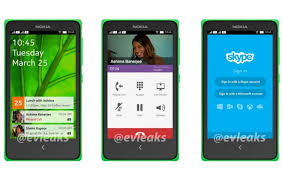
Here we explore the general context of the android User Experience, it's role in the mobile platform space and the components that make up the the system. We are particularly interested in the version numbers and how version in general is managed.
Android introduced a new user interface language to the world, one that is gradually evolving in flexibility and expressiveness. Here we review the principle elements of this language and how its is incorporated into attractive and usable applications
Occasionally, as we uncover new featured as capabilities if the applications we are building we will be interested in discussing the deep structure of the Code itself. UML is a visual language for this purpose, and here we review some of the general characteristics of this notation.
The first application exhibits a range of new concepts you will not have come across before. Here we tour this app in detail, exploring each of the artifacts we have composed, and attempt to get a sense of how they fit together to form a running app.
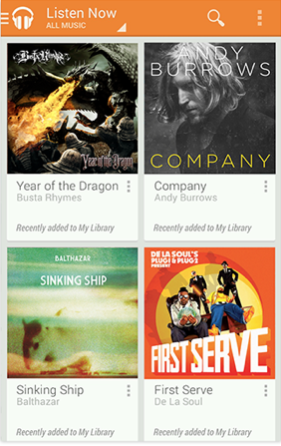
Android, like IOS, has introduced a new visual language for interaction on the devices it supports. This language is different from previous graphical environments (Windows, OSX), and is optimised for touch based interaction. Here we review some of the major elements of this language and become acquainted with the some of the primary interaction patterns.
If you have completed this lab (but not the exercises yet) then we can review your achievements so far, and closely inspect the code we introduced to accommodate the new activity + the list. We will also review the challenges.
This lab presents the solution to the series of challenges in the Donation-02 lab. If you have completed these challenges you may just with to examine our solutions, which may be largely the same as yours. If you have not completed them all, the incorporated these into your solution now and have a got at the exercises at the end of this lab. You should be able to complete these exercises.
This simple application is already composed of a range of classes related to each other in via different types of relationships. We can capture this design graphically in UML, exploring the true nature of the structure of the app.
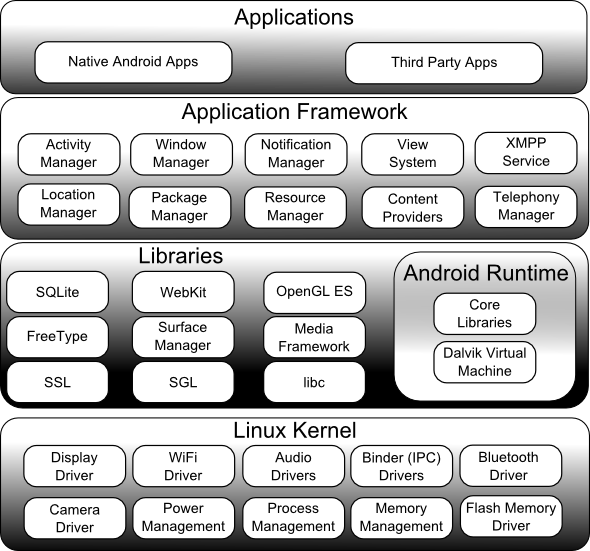
Android is a sophisticated, multi-layered operating system encompassing a wide range of features, capabilities and components. This is organised into a 'Stack', whereby each layer communicates with the layer immediately below. Here we review this stack and briefly examine the primary components at each layer.
We should now begin to have a firm understanding of structure of an android project as presented in Eclipse. Here we review the MyRent v00 in detail, and review all its working parts
Although the app is still relatively simple, this app crosses a threshold in our understanding of Android.The Activity class implements multiple interfaces, each implementation responding to different widgits. Here we review this in detail, as it represents a pattern we will see in most of the application we develop.
This is the specification for the first assignment. When you complete the MyRent labs, you should consider turning your attention to this specification here, and move on with one of the required features. Sometimes you may have to do some independent research.
Central to almost all Android applications is the notion of an event. How events are intercepted and handled is an aspect of all android programmes. Here we review the underlying Java mechanisms used in this context
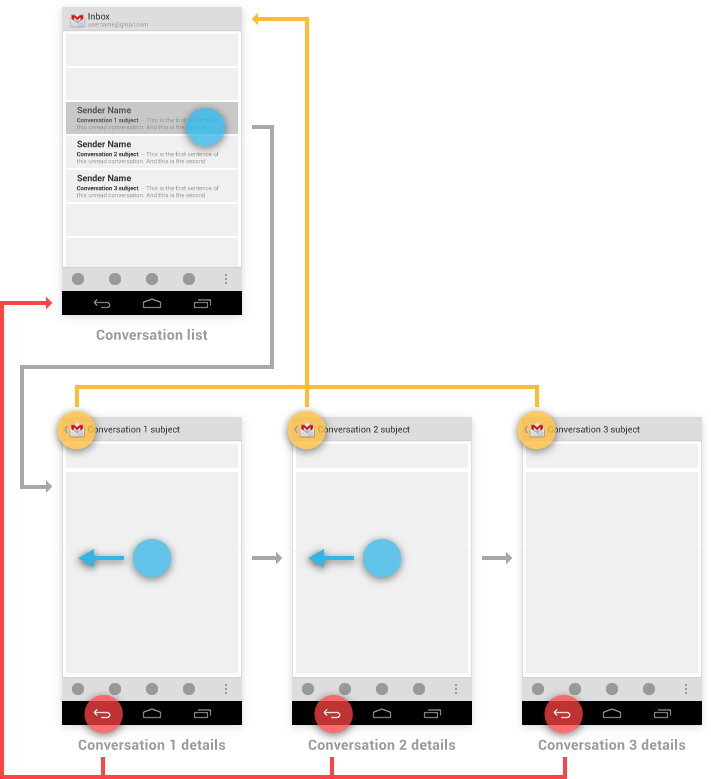
We have already explored the primary Android UX. Here we focus specifically on navigation within an android application, examining some typical patterns. In particular, we explore navigation within a single application, which can yield some interesting and surprising subtleties.
The Activity is at the heart of almost all android applications. You have already experience in designing and implementing a number of simple ones. Here we review the general nature of activities and define the principle the concerns of the programmer has to bear in mind.

Last time we explored briefly navigation within an app. In this session we continue this discussion, with a focus on navigation from the users perspective, looking at how a user can arrive into an app, and also how they may move between apps.
We review the structure, model and code in the MyRent 01 and 02 applications. The application at this stage has 2 views - sometimes called a 'Master-Detail' pattern. The Master presents a list of items which, if selected, will launch a detail view presenting the individual items. The List if items is randomly generated at application startup, and cannot be extended.
In this version we introduced an action bar, containing an option to enable a new Residence Item to be added. This residence is created in the ResidenceActivity, and will be added to the list. Additionally, the ResidenceActivity now supports a simple dialog to allow the user to select a date.
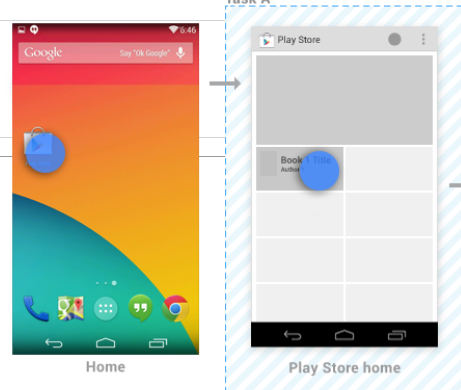
Last time we explored briefly navigation within an app. In this session we continue this discussion, with a focus on navigation from the users perspective, looking at how a user can arrive into an app, and also how they may move between apps.
To date we have seen a small number of file formats for data, namely CSV and YAML. These are common and well suited to a range of simple applications. In Android we often use XML and Json. Here we review examples of all of these briefly.
The android SDK comes with a subset of the Java JDK libraries. This subset is significantly reduced from the range available in the JDK. Amonhg these is the Streams library, which we use for simple file I/O.
In MyRent Lab 04 we incorporated a simple serialization mechanism to write Java objects to a Json file format. This required some significant enhancements to the models package, including a completely new Serializer class. Here we review these classes in detail.
Navigating "up" (as opposed to 'back') must be explicity implemented in the application. It involves enabling the up button in the action bar, handling the resultant event and also declaring the parent/child relationship in the manifest.
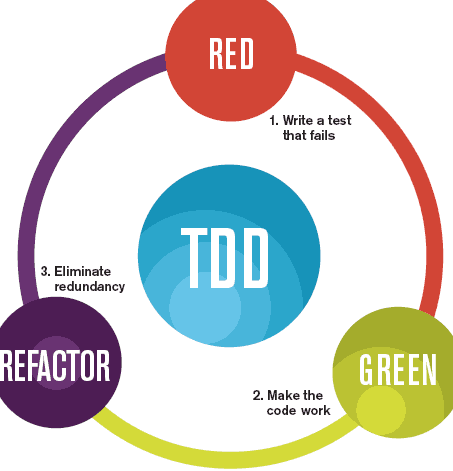
Testing is now considered an integral part of the programmers job. TDD is a technique that promotes reasonable simple unit test as precursor to implementation, significantly enhancing the robustness of the classes under test.
The Play framework has very specific test support - facilitated via a variant of the JUnit libraries. This enables play applications to be launched in 'test' mode, and specific simple tests executed on the application classes.
The focus on the tests for the moment is the Model classes only. In the lab you will attempt to build tests for the WitPress app. Here we review this model in this app in preparation the lab.
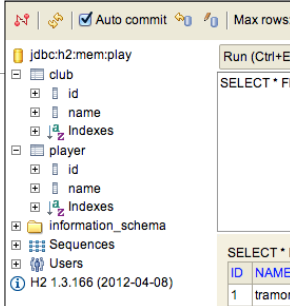
The simplest relationship to model in JPA in OneToMany, and an associated ManyToOne in the reverse directions. Here we explore this via a simple example, including an examination of the generated database tables.
ManyToMany relationships need to be carefully created and removed. They generated an extra database table. Removal is particularly tricky, and must be done in an orderly manner.
The models developed in JPA I and II can be usefully explored either in the database admin interface, or via a simple bolt-on UI. Here we explore both.
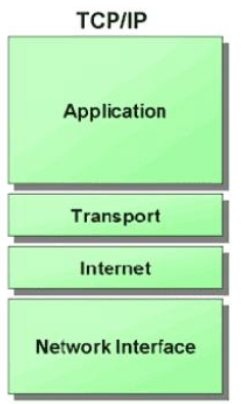
HTTP is the heartbeat of the Web, and the key protocol through with both applications and services communicate. A general understanding of it is a key part of a developers knowledge base.
Most browsers come with built in tools to let the developer explore the http interactions. As the it is text based, we can examine and interpret the requests and responses without too much difficulty.
An Application Programmer Interface is the published set of http endpoints and messages that a service can support. API design and implementation is a rich field of study - here we take a general overview.
This is our first attempt at implementing an API. It comprises essentially of a set of routes (the end points), controllers for these routes + a mechanisms for translating Java objects to/from the Json format.
A review of a number of techniques for acquiring and manipulating images taken by the Camera under Android.
This the specification and grading guidelines for Assignment 2 - MyTweetService + Test + Android App.
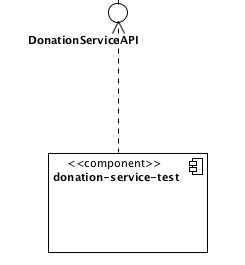
A standard Java project to implement a JUnit set of tests of the donation Service API. This is essential to ensure the stability and robustness of the REST interface.
An introduction to the Java threading model. Threads are necessary for applications that wish to access network services in Android.
This version of the Donation Android application will access the REST interface to validate a user, and download the list of donations to display in the reports view.
The android donation application is now quite sophisticated. Here we review the models for both v3 and v4 of the app.

A review of the Donation-Andorid V6 app, which we completed last week. This version of the app incorporates the User->Donation relationship, as embodied in the donation-play-service app the REST patterns it provides.
The Donation Play App is given a UX based on Semantic UI. This version is 'segmented' - facilitating interesting aggregation of views with minimal effort.
A look at the full family of donation projects again - android, play and test. An examination of their similarities and differences.
Donation Android V6 suffers one significant drawback - new tweets arriving at the server will not be propagated to android clients. Here we look at one way of solving this problem.